Curly Hair Facts & Statistics – Survey Results
This post may contain affiliate links, and I will earn a commission if you purchase through these links. Please read the disclosure policy for more details.
As a curly hair expert, I love all things related to textured hair. Given that 58% of the adults in the U.S. have wavy, curly, or coily hair (source) and the explosion of interest in wearing hair in its natural state, I was interested in finding out more information about those of us with textured hair.
I wanted to know more about my followers’ curly and wavy experiences, hoping to understand how and why they embraced their curls, some of their challenges, what was important to them, products they used, what they were looking for when styling their hair, and more. I was also curious about some curly hair facts.
And I was also curious about how follower’s hair texture evolved as they aged, what they loved – and didn’t love – about their hair, and feedback they’ve received while wearing their natural coils, curls, and waves.
Earlier this year, I asked my followers to answer a survey about all things related to having textured hair.
The response was huge, with more than 550 participants from across the U.S. and the globe! In total, there were 44 questions about curls, their history, products, if they colored their hair, their concerns, thoughts about graying, what kind of stylists they used (or didn’t!), and more.
Below are the results of the survey.
Curly Hair Facts
When asked how old they were when they started to embrace their natural texture, the responses were varied:
- 10.5% were 61 years old and older
- 18.7% were between 51-60 years old
- 19.8% were 41-50 years old
- 17.6% were 31-46 years old
- 11.9% were 21-30 years old
- 6.4 % always wore their wavy/curls since they were children.
- 1.4% shared were still not embracing their natural texture.
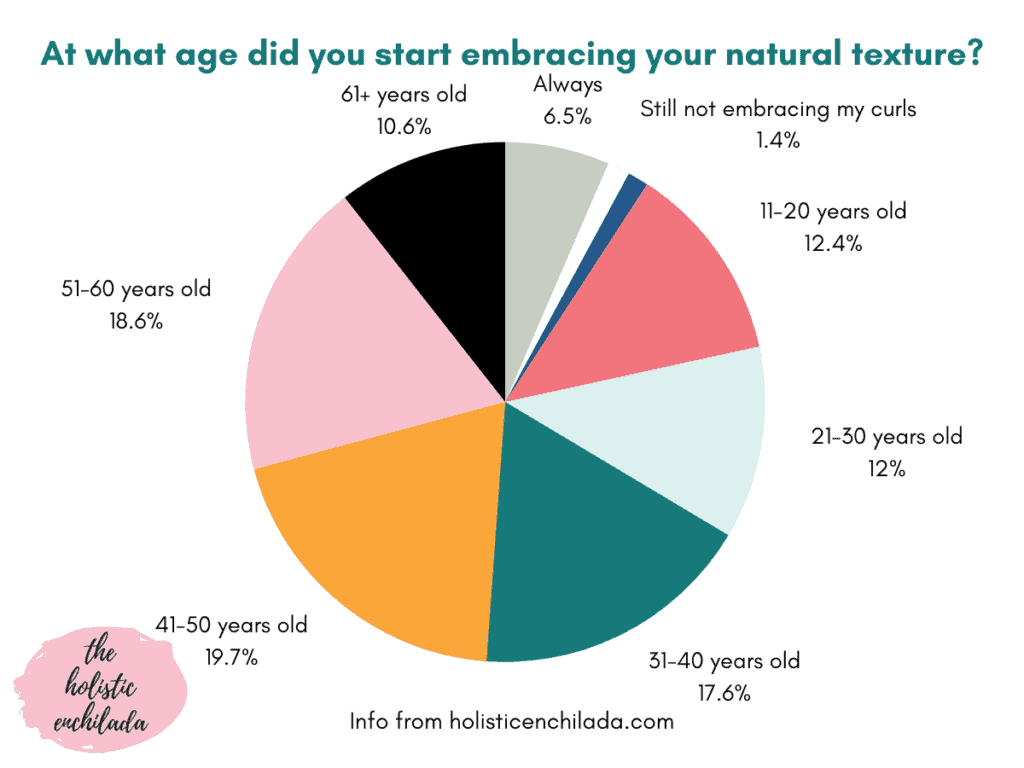
Why Respondents Embraced Their Curls and Waves
When it came to why people decided to embrace their natural texture, a majority responded they weren’t sure how to care for it and they didn’t realize their hair was curly/wavy.
Reasons also included that they wanted to improve the health of their hair, it was difficult to keep straight, they were tired of the upkeep, there was a change in their hair texture, or they suffered from hair loss.
Others shared that it was too expensive to keep straight, they had time during COVID, or they were curious, or that they wanted to set an example for their curly haired kiddos.
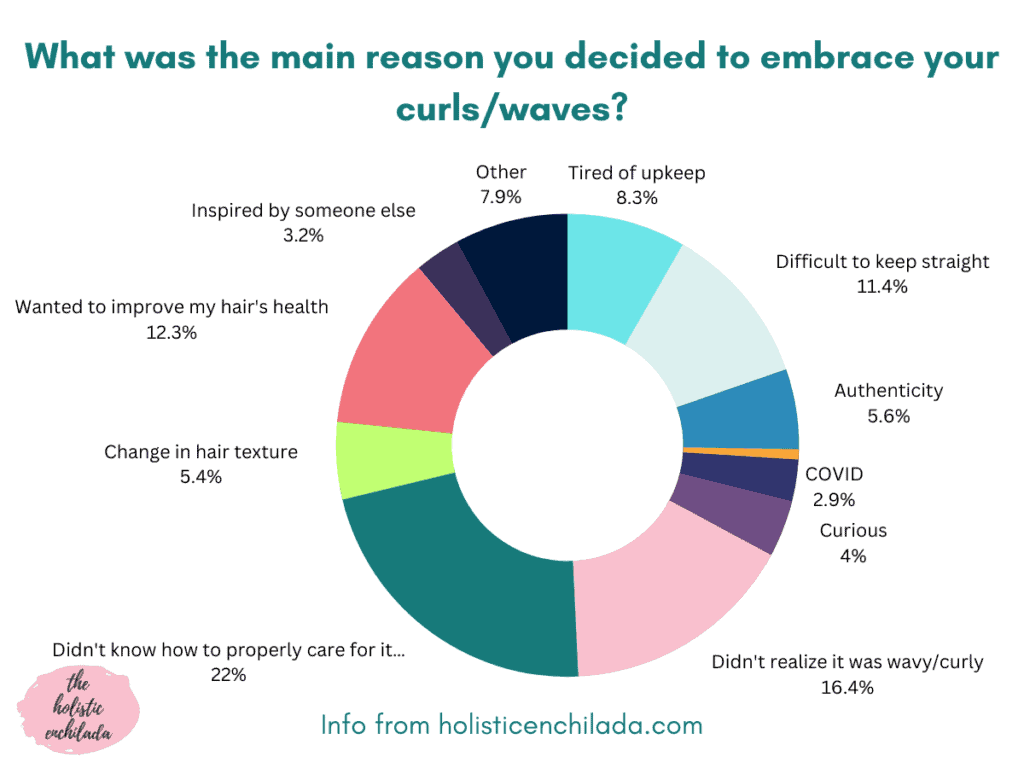
Some survey respondents further shared what inspired their curly journey:
“I finally realized my frizz was waves and curls!”
“Honestly, it just looked a lot better wavy & I had no idea I had been brushing out my waves.”
“I always wanted to, but just didn’t know how to.”
“I wanted to improve the health of my hair (it was damaged/falling out).”
“I didn’t really know I had curl potential until then. Figured I’d give it a try!”
“Honestly, it’s a pleasant little side effect of menopause. Before menopause, my hair was straight, not stick-straight but not quite a 2a wave pattern.”
“My sister’s progress inspired me to try it too.”
Previous Straightening Methods
How did readers with curls and waves manage their hair before they started their curly girl journey?
Those who had previously straightened their hair mainly used a hair dryer and a flat iron, closely followed by a flat iron (only), and a hair dryer, and a straightening brush.
Others tried chemical treatments, including Keratin treatments, relaxers, thermal reconditioning, rebonding, while a small percentage turned to a round brush, brushing their curls and waves out, cut it short, or wore it up or pulled back.
Most respondents straightened their hair for years before wearing their hair naturally curly, wavy, or coily. The reason why include:
- 21.3% didn’t know what else to do or followed what they’d been taught
- 20.4% wanted to tame the frizz
- 15.8% liked straight hair better
- 9.3% didn’t know their hair was textured
- 7.8% wanted to look more professional
Others shared:
“I didn’t know I had curly hair, when I let it air dry it was poofy, frizzy, neither straight nor curly. Drying it with a round brush gave me a nice look.”
“I was made fun of for my texture.”
“I would do it for special occasions for something different.”
“That’s just what we did in the mid 2000s!”
Why did readers stop straightening their hair? Reasons were varied:
- 17.4% reported their hair was damaged
- 15.7% stopped because they learned how to care for their nature hair
- 12.8% said it was because straightening was too time consuming
- 9.4% shared that they were embracing a more natural lifestyle
Others shared that hair loss inspired them to stop straightening their curls, they were afraid of toxic chemicals, they wanted to be more authentic, they were curious about curls, and it was getting curlier as they aged and harder to straighten.
Surprisingly, 48.6% of those who did straighten their hair had no regrets. Only 26.3% reported they regretted straightening their textured hair. A significant percentage – 20.8% – said they maybe had regrets about it.
How People Embraced Their Curls
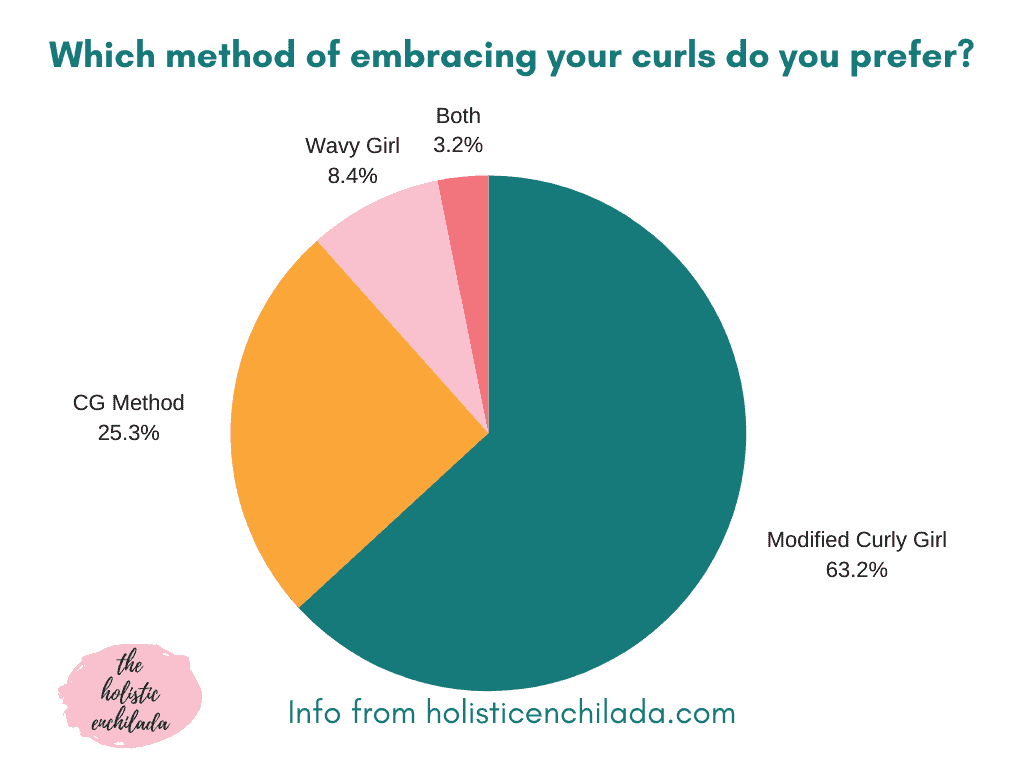
Others replied that they preferred the wavy girl method, used a combination of methods, were still trying to figure it out, wore their hair short to keep it easy, or used a trial and error approach.
The overwhelming majority of survey takers use the modified Curly Girl method.
Curly Hair Transition Phase
The responses to how many attempts it took to embrace curls were so interesting! I truly expected the curly hair transition numbers to be much different, but here’s what the results were:
- 40% said one time
- 30% indicated between 2-5 attempts
- 29% shared they tried 5 or more times
- 1% said they haven’t tried it yet
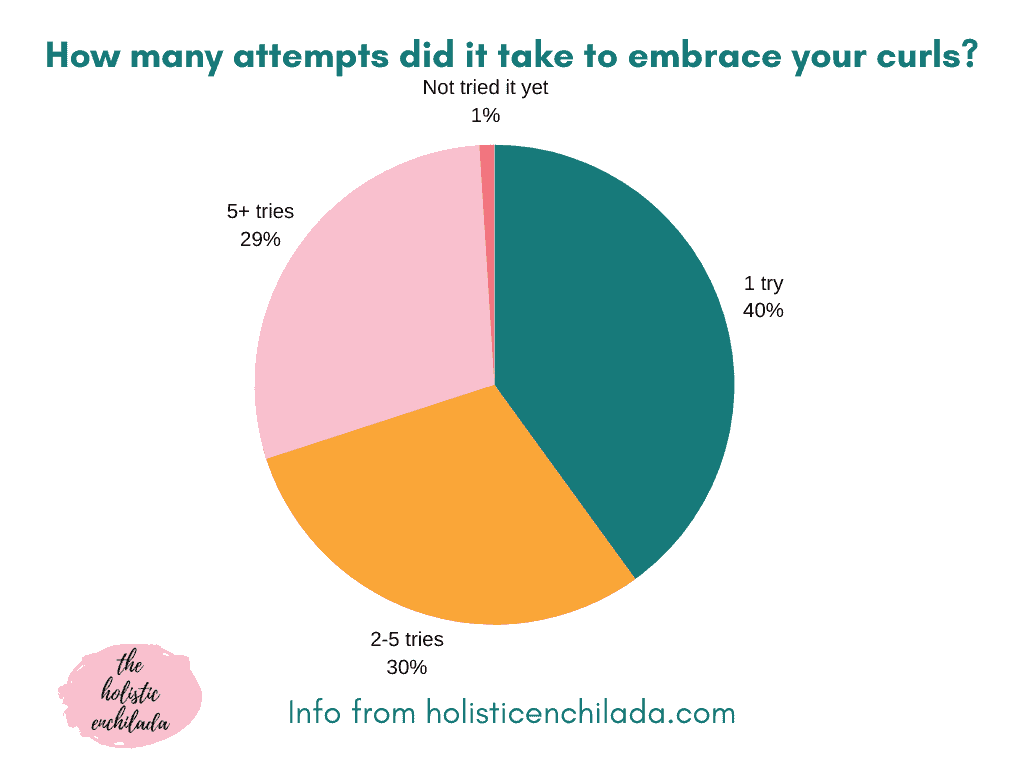
Equally fascinating was how people felt when transitioning to wearing their natural hair. When it came to transitioning to wearing natural curls, the scale ranged from 1 to 5, with 1 frustrated and unhappy and 5 happy and satisfied.
- 10.8% weighed in with a 1
- 19.5% rated their experience as a 2
- 41.9 % said they were at a 3
- 18.6% gave a 4
- 9.2 % ranked their feelings as a 5
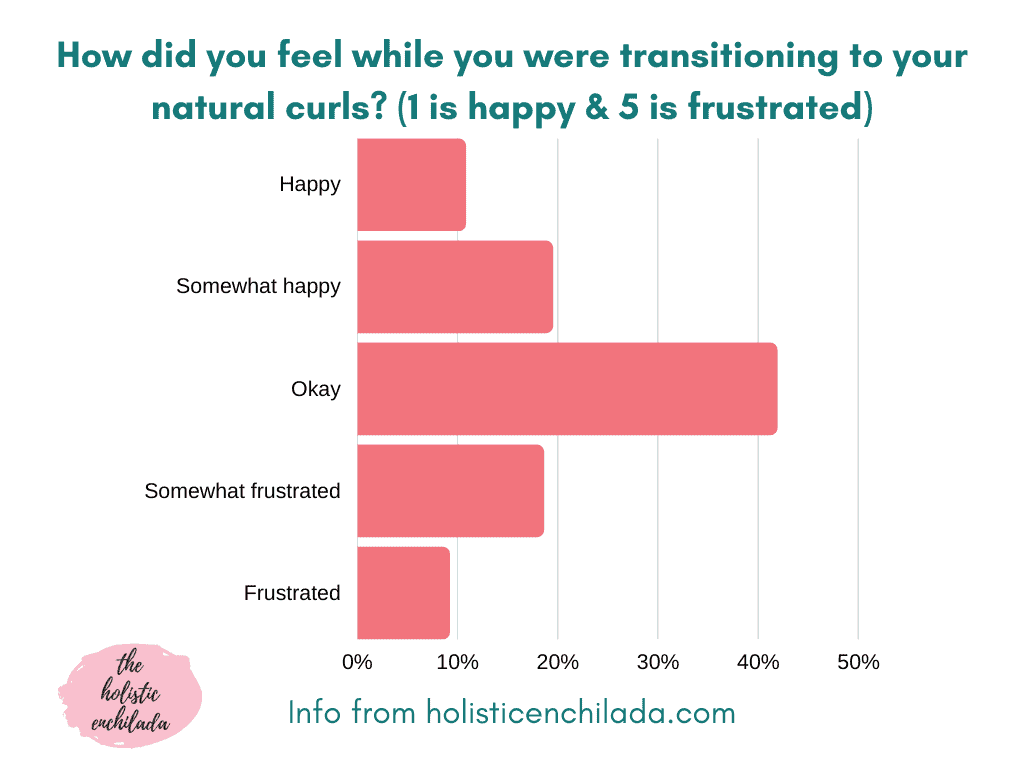
How long does transition take when doing the Curly Girl Method
The average time frame participants’ transition phase lasted differed too.
- 18.4 % was less than 3 months
- 21.3% were 3-6 months
- 28.1% were 6-12 months
- 18.7% were up to 2 years
- 13.5% were more than 2 years
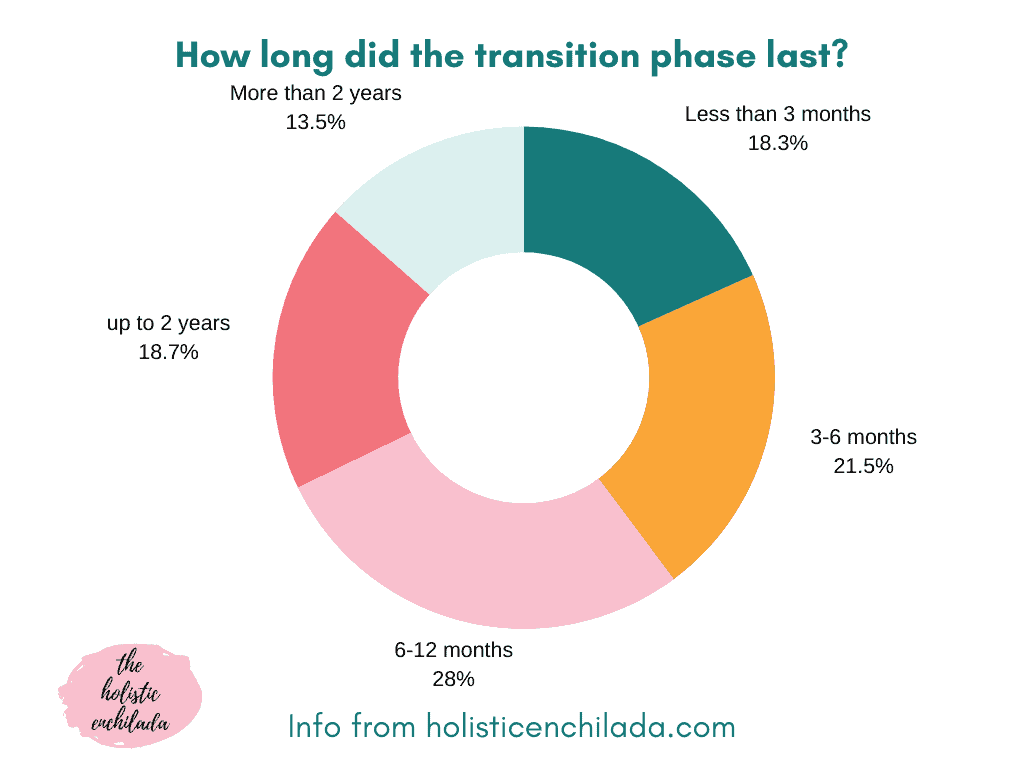
Respondents were overwhelmingly positive about embracing their curls and waves, with 67% sharing that they were happy with their experience.
Curly and Wavy Product Use/Getting Started
If they had to embrace their curls all over again, the overwhelming number of respondents shared they would use a modified Curly Girl method, followed by the Curly Girl method, and then the Wavy Girl method.
The biggest challenge for people embracing their curls is inconsistent results. Other answers included uneven curl patterns, frizz, styling doesn’t last, and they didn’t like their curl pattern.
Other answers included:
“It’s hard to figure out the right products and techniques!”
I have so little volume!”
“I need to find a style and length that works for me.”
“One side looks different than the other.”
“I have to wash at night and style it in the morning.”
I have hair loss and texture changes due to hormones.”
“The weather fluctuates between humid and dry.”
The number of products tried before finding ones that worked varied. Most people shared that it took between 6-10 products or 11-20 products before figuring out what worked for them.
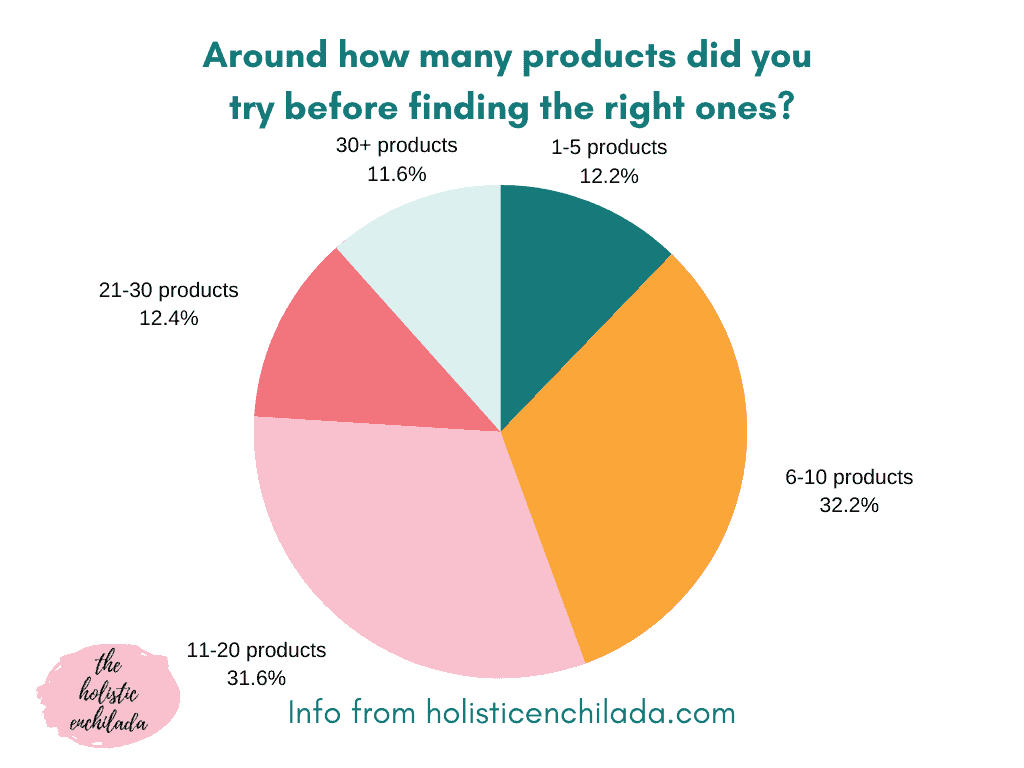
What do participants prioritize, volume or definition – aka no frizz? The results were split neatly down the middle. Half said they would take volume and deal with some frizz and results that won’t last as long. The other 50% indicated that they would happily sacrifice volume for more definition.
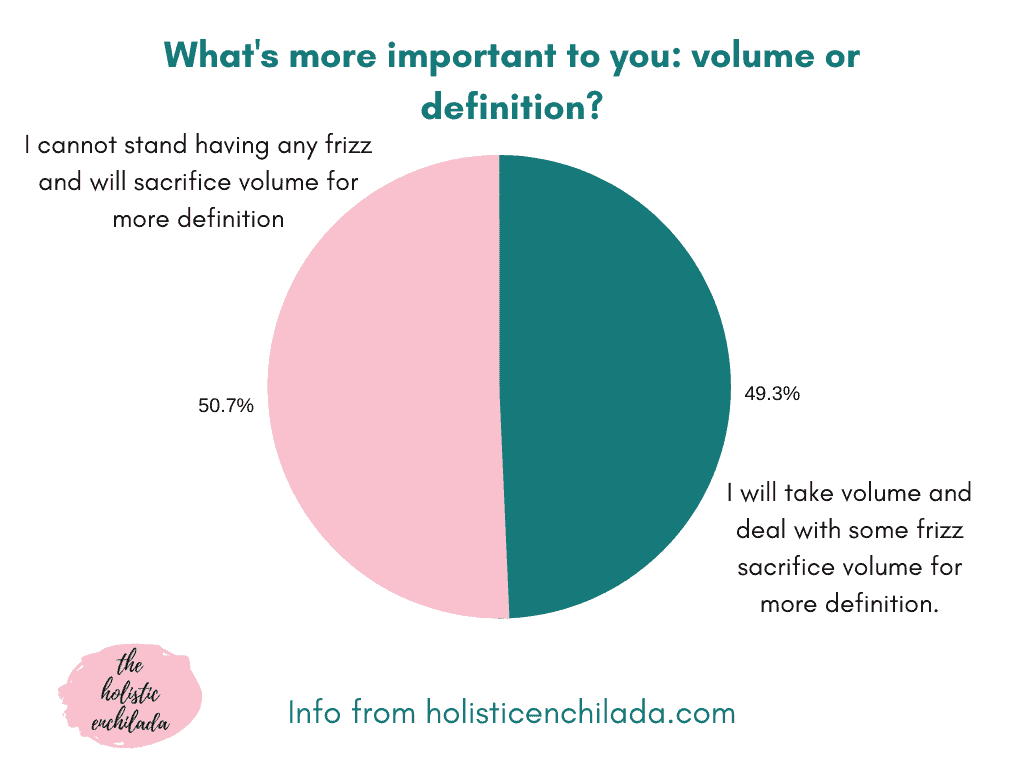
I was especially keen to find out what readers thought made the biggest difference in their hair. Was it styling techniques like squish to condish, brushing with a Denman brush or a wet brush, scrunching in product, raking in product or using praying hands, really anything done after or while adding products after washing, or the products themselves?
Most readers, 42%, thought that technique was more important than the products used to achieve results. About 35% thought that products were the key to making a bigger difference with their hair.
However, many wrote in their own answers, sharing both products AND techniques make a difference. Others noted that they had a severe learning curve and a lot of trial and error when it came to technique and products.
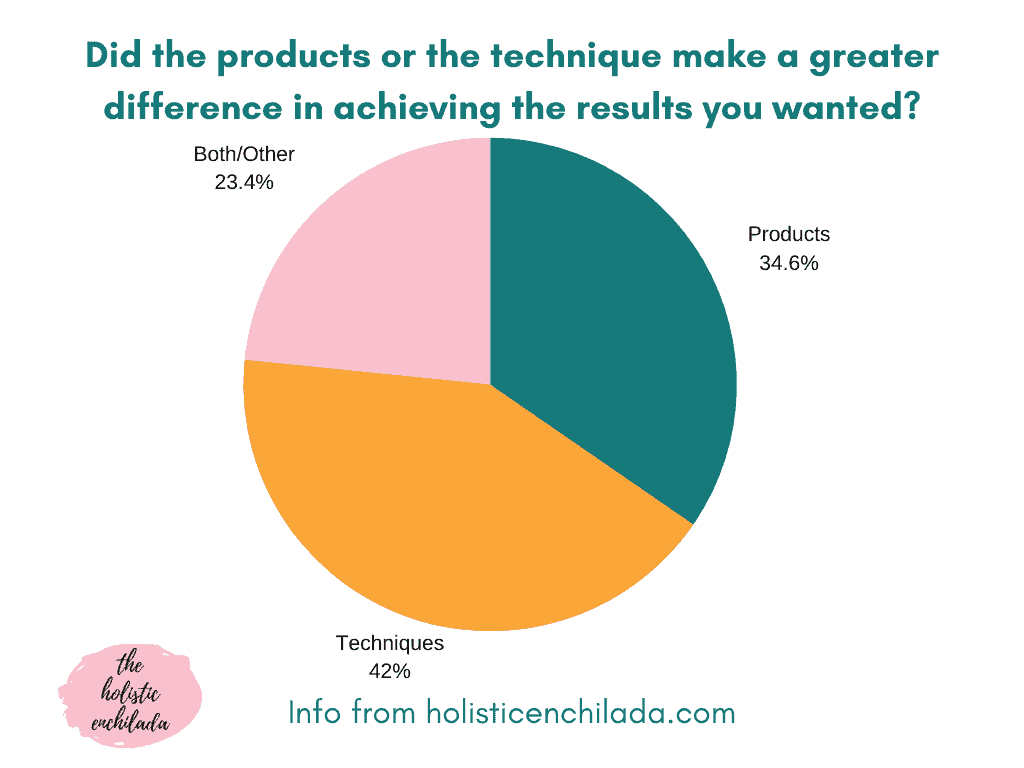
Just over 50% tried 4-6 styling techniques before finding the ones that worked for them. 25% said it took only 1-3 times before they found a process that worked for them, while 14% said it took 7-10 tries. The remainder indicated that they made 10+ efforts before finding their way.
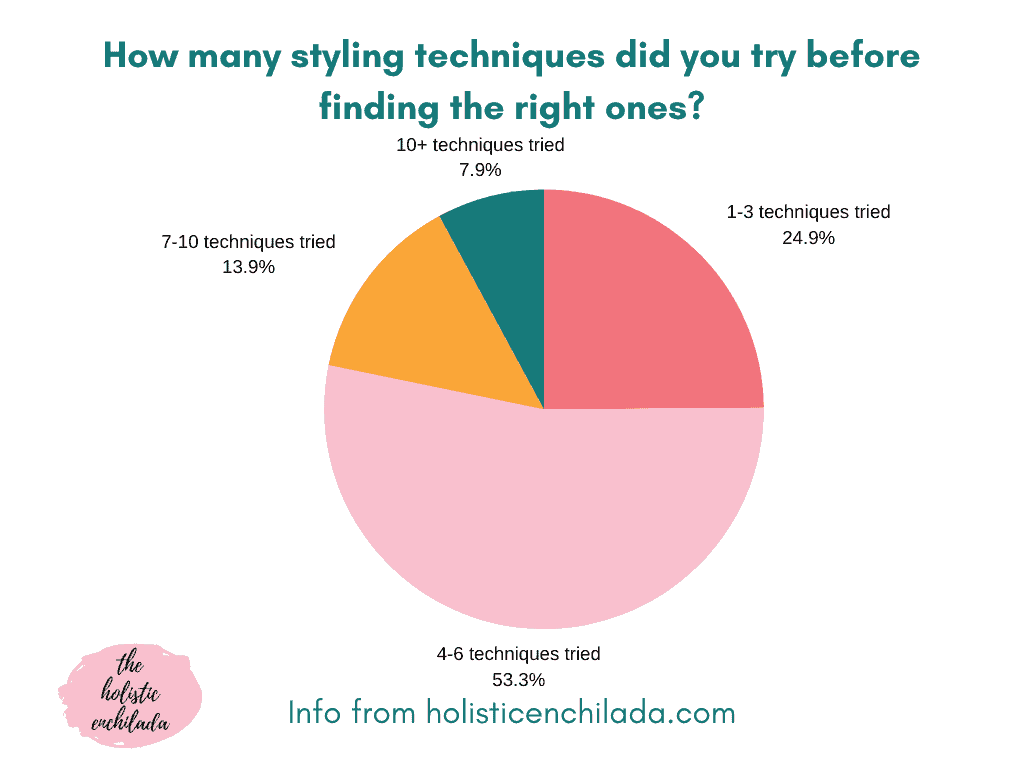
Hair Product Use
Hair products are a big deal to those of us with textured hair. Oftentimes, the secret to managing curls and waves is using the right product. And textured hair consumers are very likely to invest in products for their curls and waves. A recent study showed that curly girls spend the most money on a single hair care product. (source)
What are the biggest factors that play into selecting and buying products for curly girls? Hair characteristics! An overwhelming majority use products that suit their hair’s texture, density, porosity, and health.
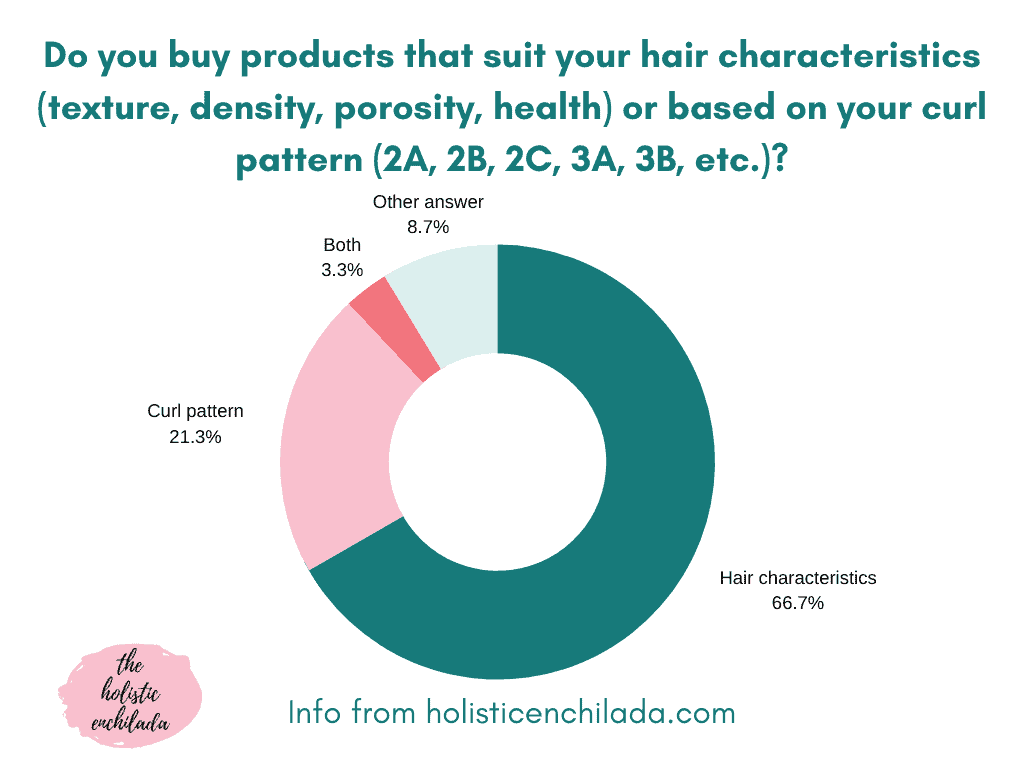
Product ingredients were also a huge factor, many noted they looked at labels to determine if it would be good for their hair. A smaller minority shared that they bought items with labels targeting their hair patterns (2C, 3A, etc.).
A huge number of participants weighed in that they typically rely on experts with hair like theirs. Others had more specific reasons for buying products, they only use options that are unscented, or stick to items with lots of good reviews.
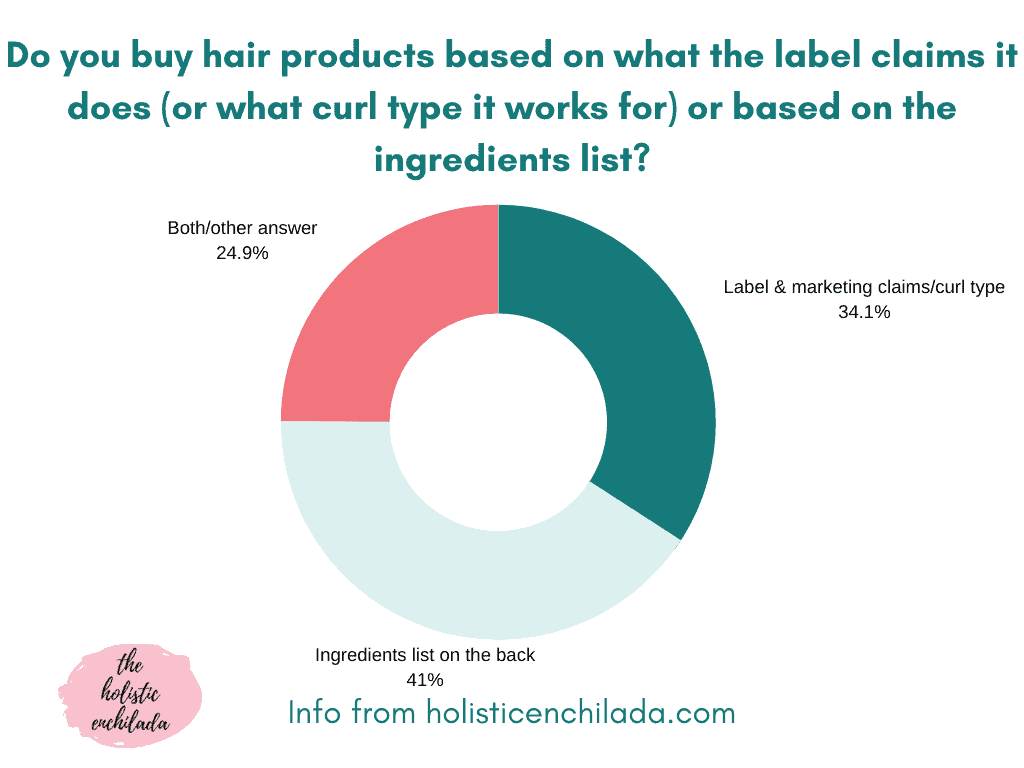
“I normally go for label claims but I’m slowly knowing what ingredients work.”
“I usually follow recommendations from experts like yourself.”
“I find products from word of mouth – usually from different influencers – and I review the reviews!
“Recommendations from people with similar hair is how I find products.”
The hands-down favorite product for people who took this survey was gel, rated number 1 by 69%. Cream came in second, followed by mousse, foam, serum, and hairspray.

When it comes to the amount of products used on wash day, 67% replied that they use on average 2-3 styling options. Roughly 20% used 4-5 different products.
Others provided their own answers:
“It depends on the weather, I may use more or less depending on the humidity.”
“I’m still trying to figure it out!”
“Honestly, it depends on how tired I am.”
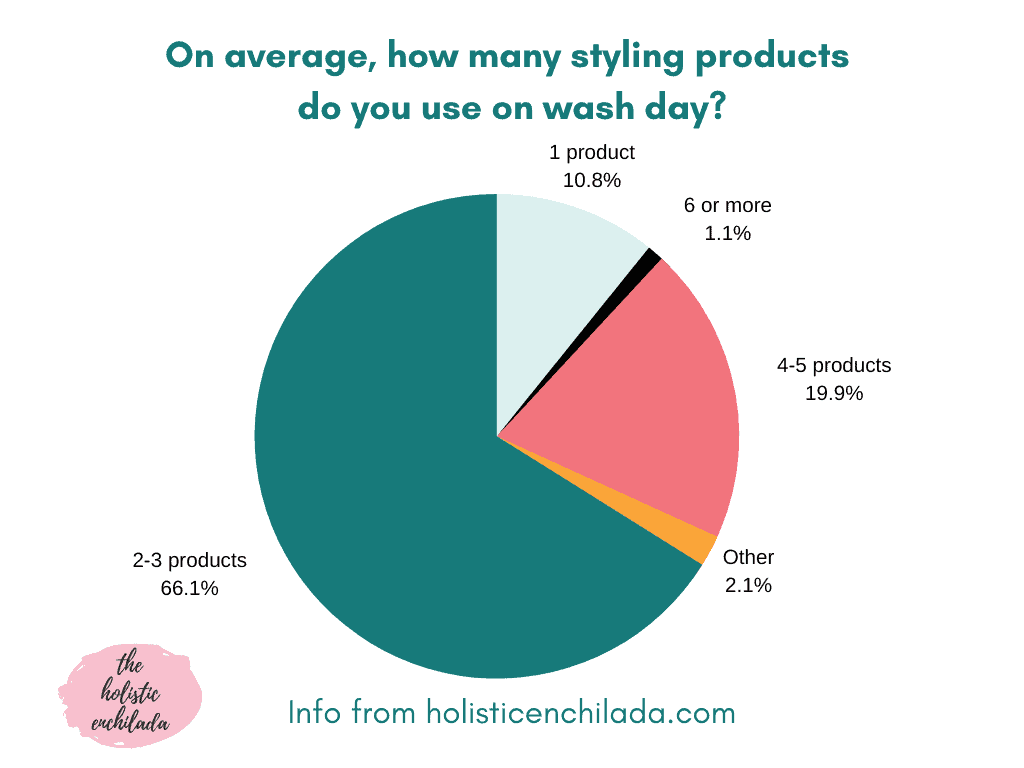
Hair Texture over Time
When it comes to hair texture, the survey showed that 77% of respondents’ hair has changed over time, either getting curlier, thinner, and even straighter.
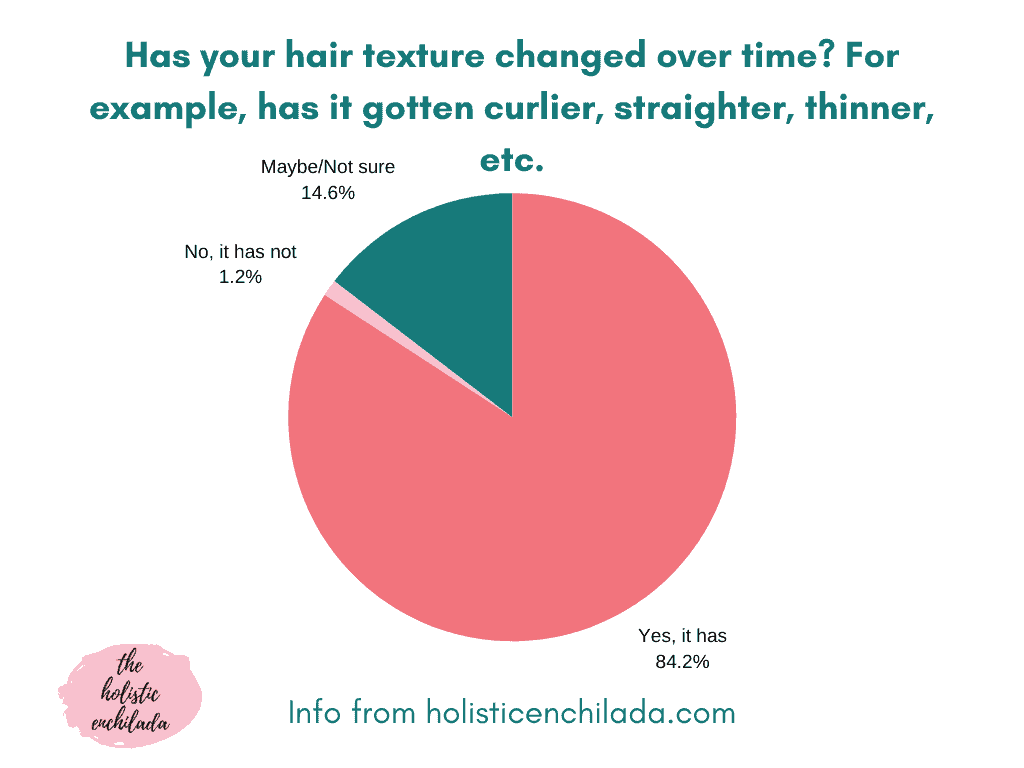
39% weren’t sure why this happened, while 25% reported that they suspected hormonal changes were the cause, and 20% chalked the changes up to age or genetics. Others cited damage done to their curls as a reason for the change, while others thought stress and diet were a factor.
These changes to their hairs’ texture were problematic, the survey showed, with 43% of survey takers indicating that texture changes presented a challenge to wearing their hair in its natural state.
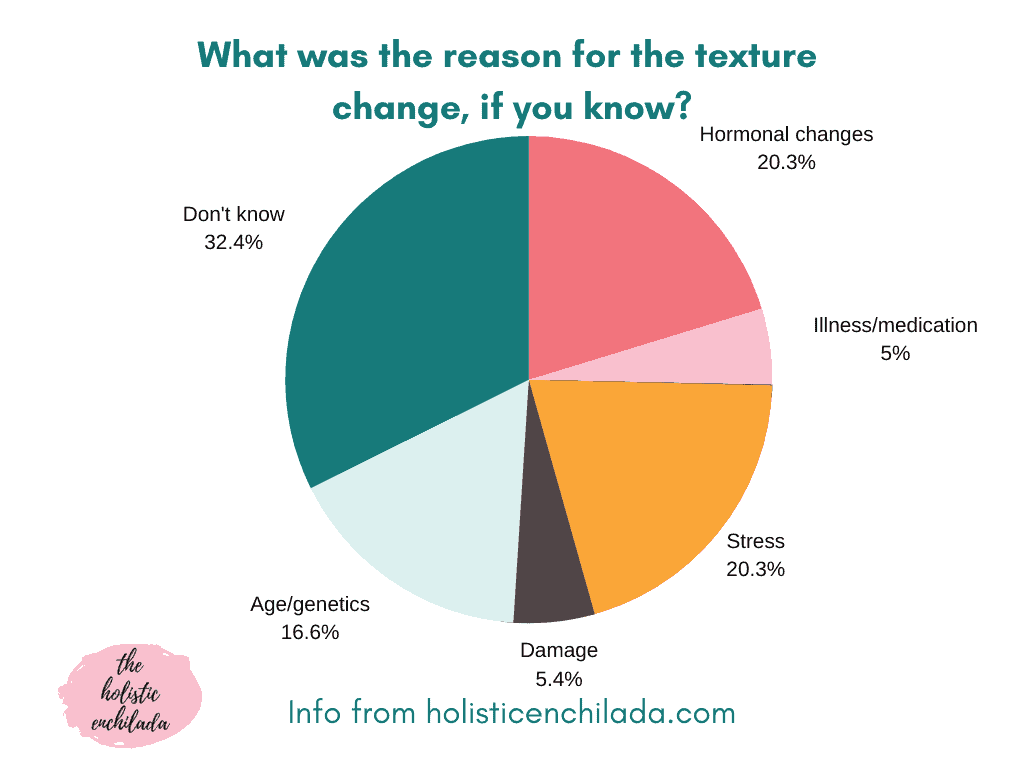
However, more than half said they liked their hair’s natural texture. When asked about going back to straightening their hair, 82% reported that even with issues with their curls and waves, they weren’t going back to straightening their hair.
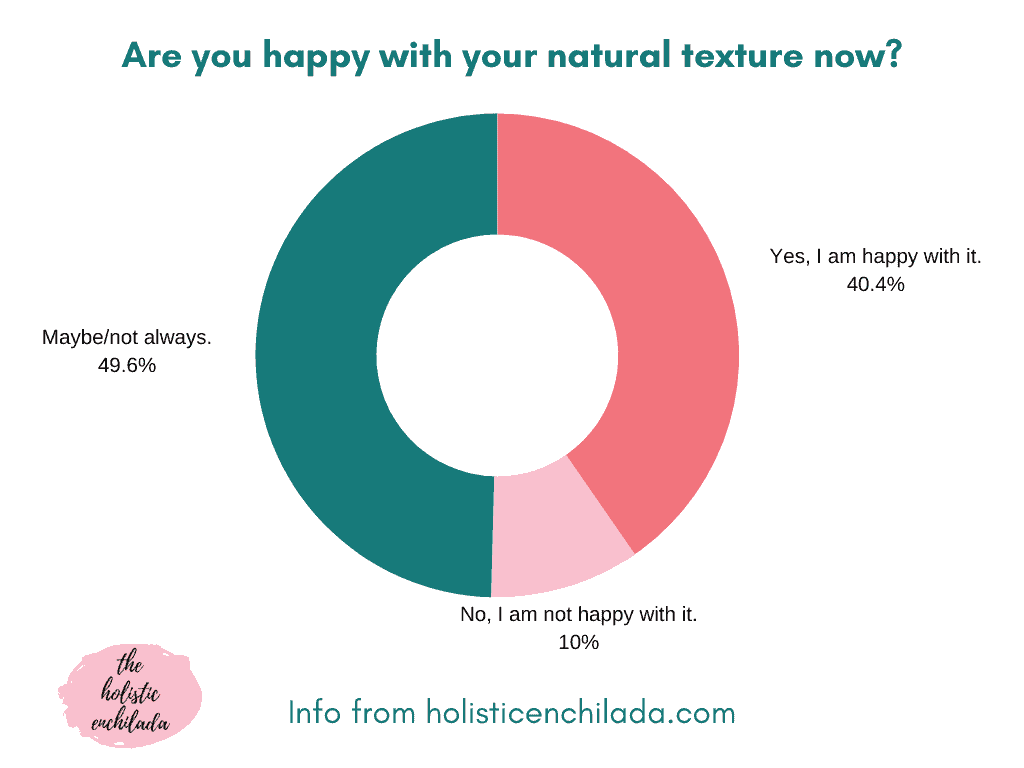
Curly Hair Concerns and Complaints
There were so many great answers to why respondents loved their curly and wavy hair.
Out of the 500 individual answers, here are some of my favorites:
- I love natural looking curls!
- Authenticity is important to me.
- I love that it has volume.
- It’s much healthier now and the curl pattern has gotten tighter since going CGM.
- I love it when it curls well AND holds well.
- It takes less time than straightening
- Every hair doesn’t have to be “in place” to look good.
- It’s been one of the few benefits of menopause
- It does naturally what I spent years doing with tools
- It’s unique to me, and sometimes unique to the day. LOL
- It’s big and beautiful.
- It’s so wild and free.
- It suits me well and is part of who I am.
- It’s just me. I’ve always been “known” for my curls, even tho I’d straighten occasionally. I also like that I can be a role model for others embracing their natural texture.
- It’s so freeing to embrace your curls and not have to worry about if your hair will stay straight because of the weather changes or humidity.
- It is shiny and healthy. It can be beautiful.
- I get good curl clumps and ringlets. And if a piece doesn’t curl how i want it to or falls flat, I can just get it wet, scrunch and it’ll bounce back!
- It’s easy to refresh it so I don’t have to straighten it every day.
- Big hair suits me! And it is more fun.
On the flip side, wonky curls and waves can be frustrating. People hate these things about their curls: frizz, an inconsistent curl pattern, a lack of volume, the fact it can look tangled, weather impacting how their hair turns out, fairy knots, it’s hard to figure out what their hair needs on wash days, it can be time-consuming, and tedious wash days.
Other complaints were:
My hair used to be more wavy/big/kept curl and have volume, and now it is more flat/thin. I hate how I look with droopy waves or straight hair. I wish it was actually curly. Waves are just inconsistent and sometimes no matter what I do my hair is terrible.
The idea that it’s messy or unprofessional. It typically only looks good on wash day or day 2 and I really don’t have the time to refresh it on all the days I don’t wash it (I wash every 3-4 days).
Curly and Wavy Attitude/Confidence
When asked if they experienced any discrimination, negative comments, or other issues at work because of wearing their natural hair style, over 90% shared that they have.

Fortunately, 87% have received more compliments than criticisms about their hair texture and 76% said they felt confident wearing their natural curls and waves.

Coloring Curls/Gray Hair
When it came to coloring their hair, 46% said that they do color their curls.
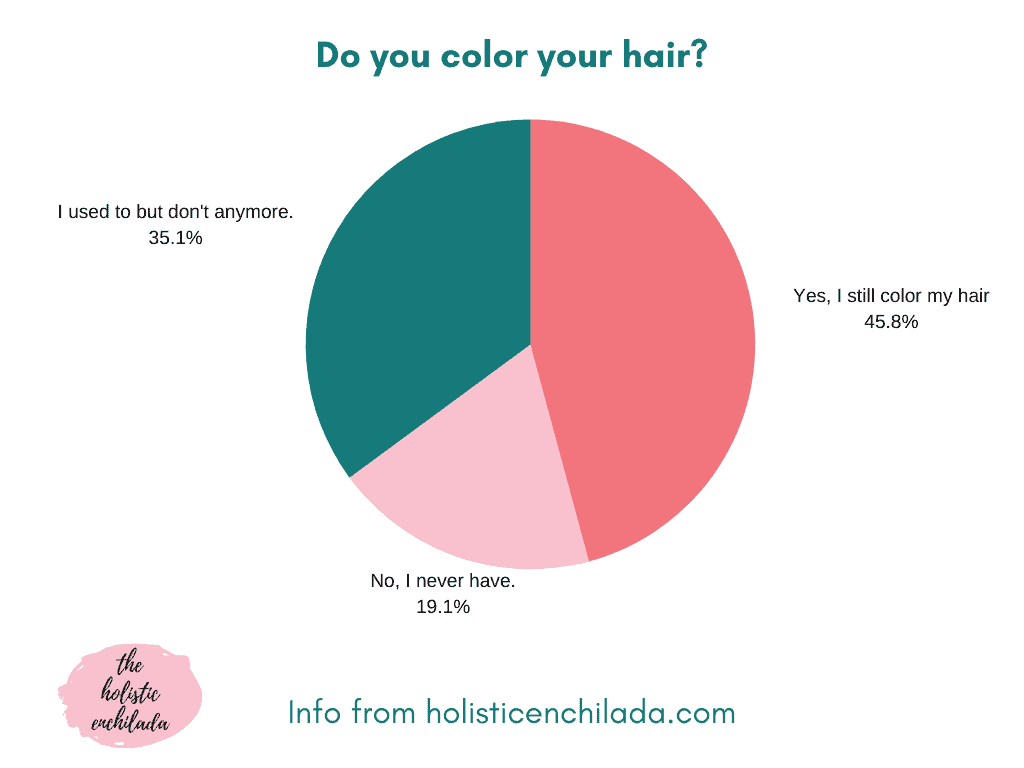
Most indicated that they weren’t sure if it damaged their hair, 26% said it affected them negatively, 23% said they didn’t notice any changes, and 14% shared that coloring their curls positively impacted the health of their hair.
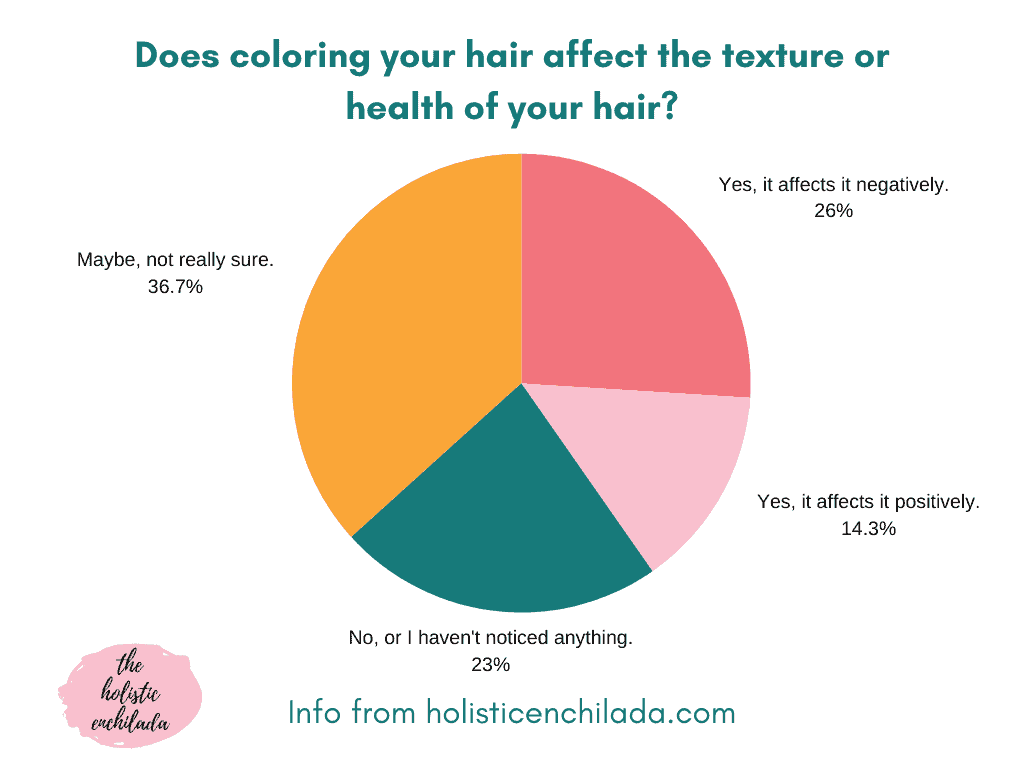
Highlights done by professionals was the most common way people colored their hair, followed by at home hair dye. Others had lowlights and gray coverage done in a salon.
When it comes to going gray, more than 83% stated they had gray hairs. 55.5% embraced them, while 44.5% covered their grays. Most found that their gray hair was very much like the rest of their hair’s texture, while 38% found that they did have trouble with their grays. The reason they had trouble styling their grays? The top answers included that they were a different texture or porosity, they had a different curl pattern, and their grays were frizzier and drier.
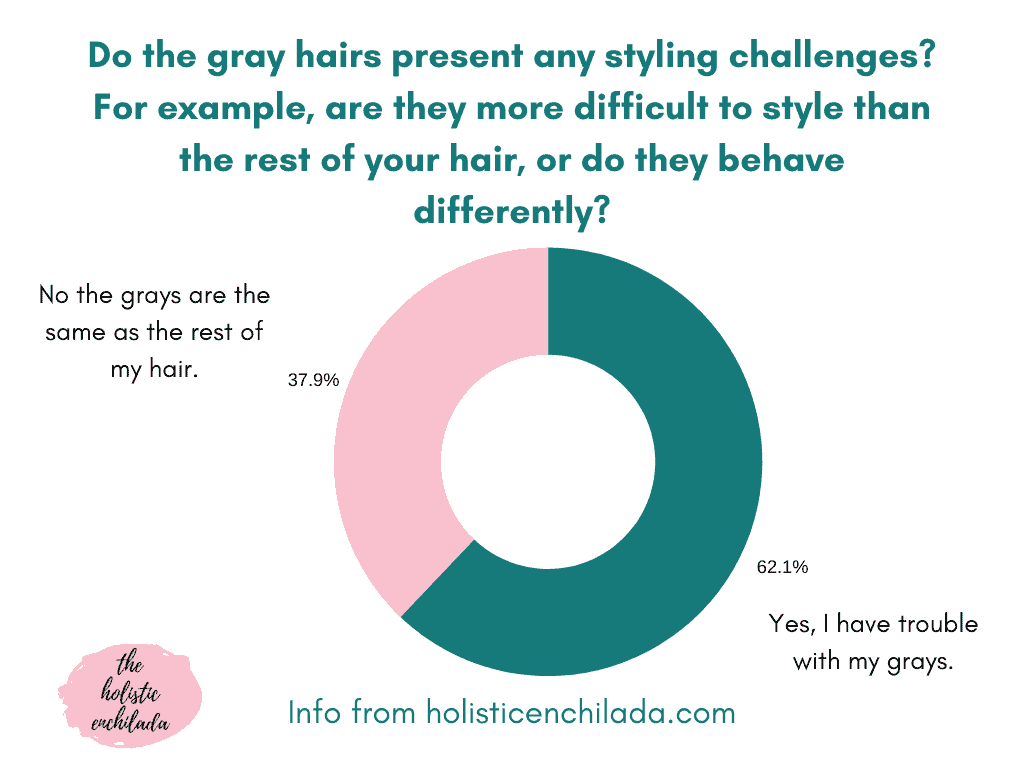
Curls and Stylists
Not too surprisingly, a huge majority of those with textured hair had issues finding a stylist, with a whopping 70.3% had a bad experience at a salon because the stylist didn’t understand how to treat their hair.
When asked if they saw a curl specialist:
- 55.6% went to a regular stylist
- 28% saw a curl specialist
- 16.4% don’t go to a stylist

Most readers did indicate that they were happy with their current curls specialists or regular stylist (non-curly specialist).
Other interesting Curly Hair facts:
How common is curly hair? Is curly hair rare?
Curly hair is relatively common, but its prevalence can vary significantly based on ethnic background and geographical location. According to a study published in the Journal of the American Academy of Dermatology, approximately 45% of people of European ancestry have straight hair, 40% have wavy hair, and only 15% have curly hair. On the other hand, curly hair is more prevalent among individuals of African, Afro-Caribbean, and Mediterranean descent, where rates can be much higher, ranging from 51% to 87%. *
Curly girls’ relationship with their hair
When asked if they love their hair, only 11% said yes. But when curly girls were exclusively polled, 40% shared they loved their hair. (source)
How does someone get curls or waves?
The type of hair is determined by the shape of the hair follicle. Straight hair is produced by sphere-shaped hair follicles, wavy hair is produced by half-moon follicles, and curly and coily hair are the result of ellipse-shaped hair follicles. (source)
Curly Hair Products
When it comes to those of us with wavy and curly hair, 48% are looking for frizz-reducing products, while the majority of people with coily hair look for moisturizing products. (source)
Curly Hair Count
The average head of hair has 120,000 hairs while a curly head only has 100,000. (source)
How fast does curly hair grow?
Curly hair grows approximately six inches a year. (source)
Hair shrinkage
Wavy hair can shrink up to 5 percent, curly hair can shrink up to 30 percent, and coily hair can shrink up to 75 percent of true length. (source – Robin Sjoblom of Southern Curl)
Conclusion
My own journey to figuring out what worked for my hair not only helped me feel and look better, but truly changed my life.
I know from experience that the process of determining what works for your wavy, curly, and coily hair can be a challenging experiment, especially with so many factors that can impact hair – the weather, products, how damaged their hair is, products used, techniques tried, etc.
But whether it’s deciphering the right products for you, adopting hair care routines, or seeking advice from professionals, embracing and understanding your hair is not just about looking good, but about nurturing your individuality and self-confidence.
Enjoy your waves, curls, and coils – your hair texture is beautiful!
Thank you to those who generously took the time to take this survey and share their thoughts with me!
*Source: (Loussouarn, G. (2001). African hair growth parameters. British Journal of Dermatology, 145(2), 294-297. doi:10.1046/j.1365-2133.2001.04319.x; Timis, T. L., Sveinsdóttir, S., Helgason, A., Gylfadóttir, S. S., & Palsdottir, A. (2015). Hair morphology in seven populations from Iceland, Greece, and Afghanistan. Homo, 66(6), 511-520. doi:10.1016/j.jchb.2015.09.002)
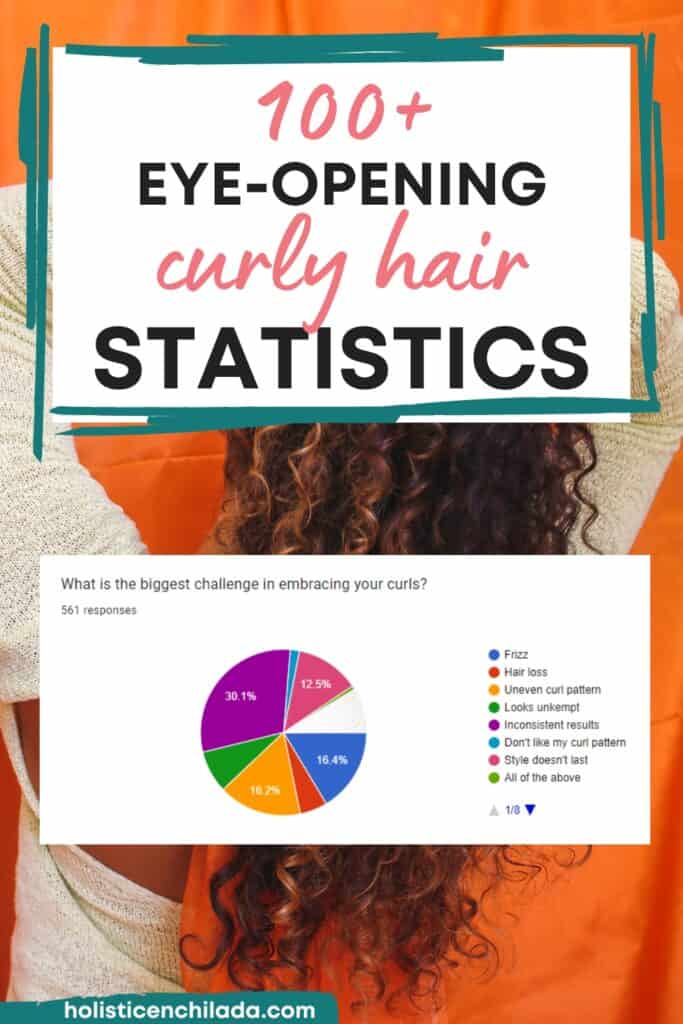

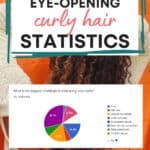
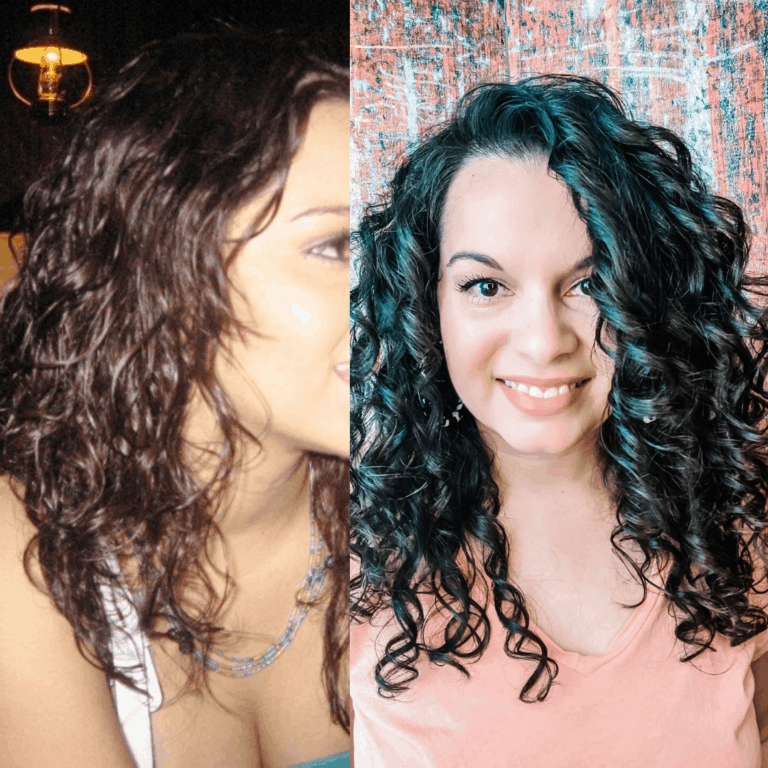
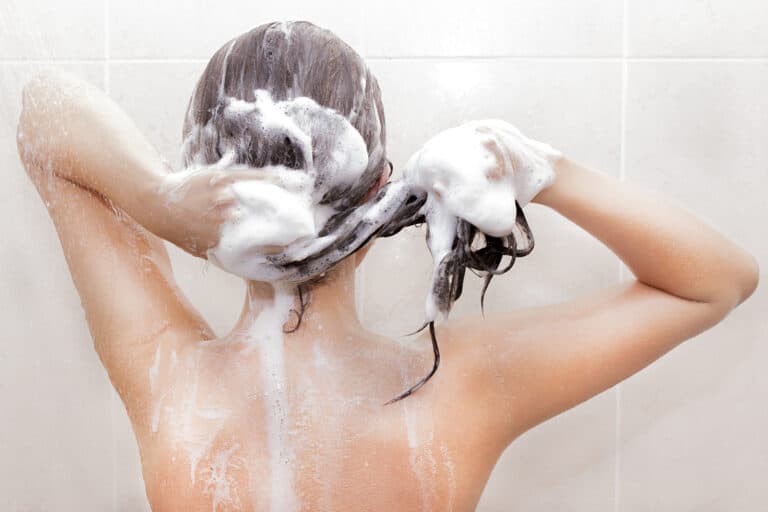
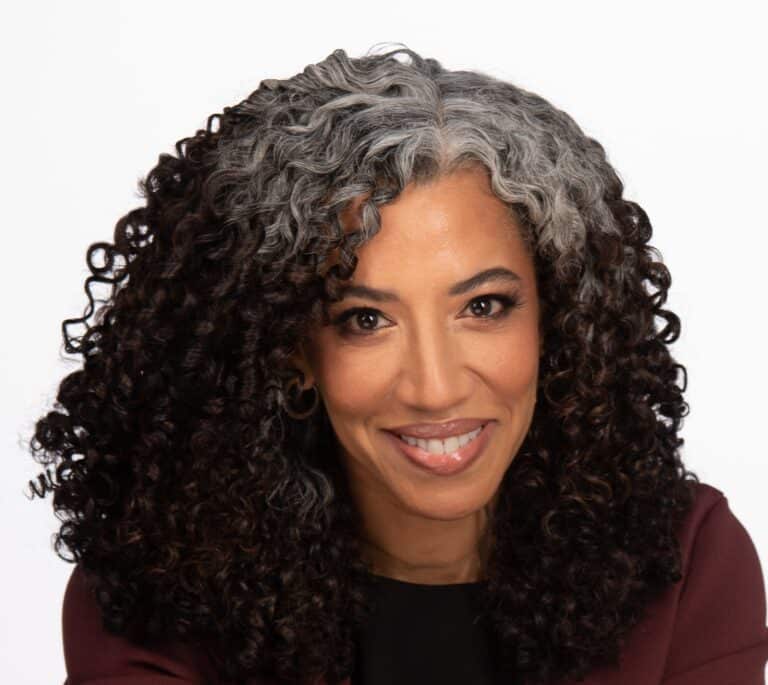
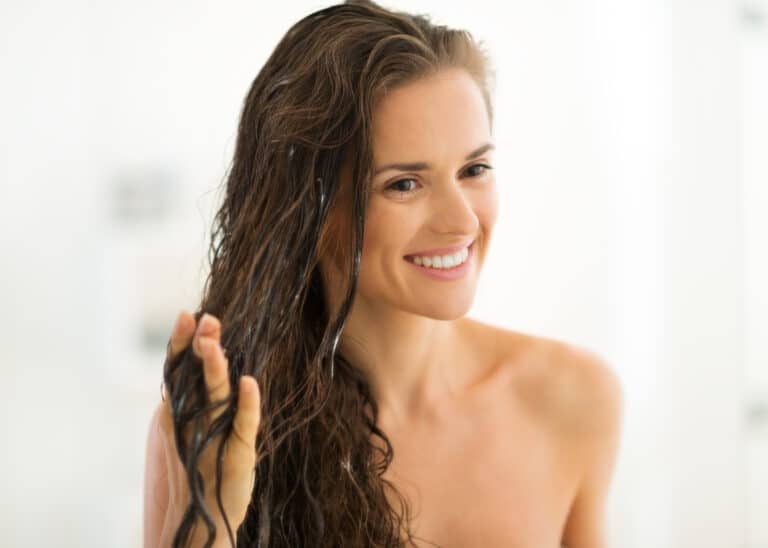
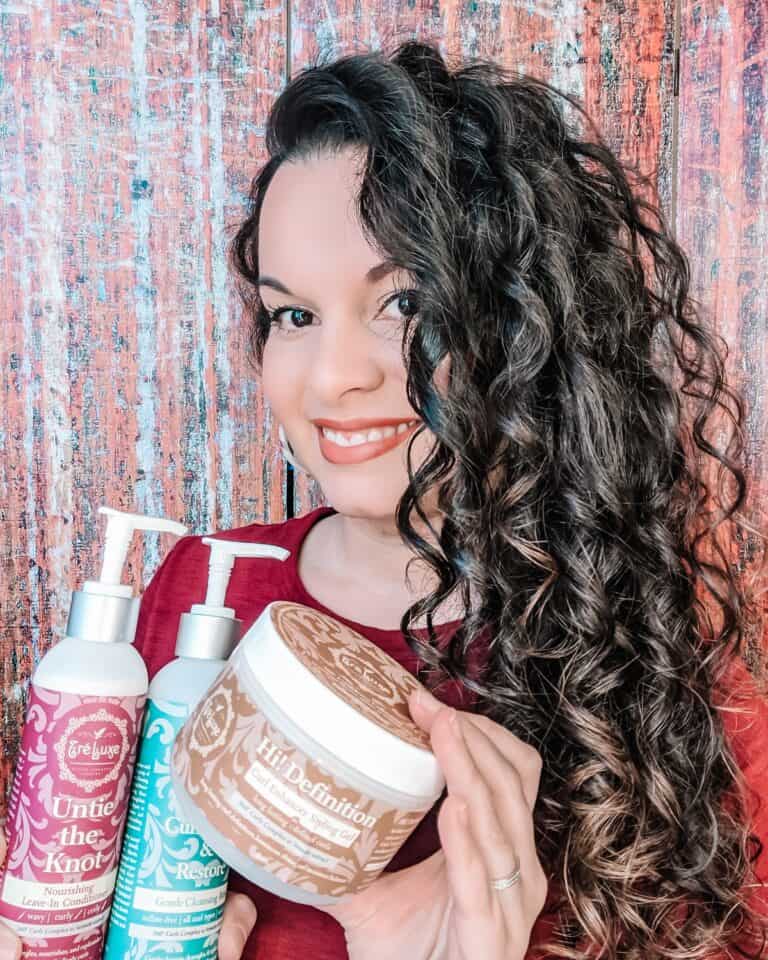

Thank you for doing all this work on the survey. I have learned from you how to care for my fine, low density wavy natural white and silver hair. I use EvolVh products almost exclusively to clean and condition and usually only use Aussie max hold mousse for styling since I had it cut short in a chin length Bob. My hair gets oily fast so EvolVh styling products are to greasy for my hair. I have them all and do try but my hair turns oily looking with a half a pea sized amount used. I live in the high desert climate of Colorado and am 78 years old.
Thank you for the support Sydney! And I’m so glad you love EVOLVh too. They’re my fav!
I look forward to you sharing the insights you’ve gained as a result of the survey in future posts, product reviews/recommendations and styling information. Thank you for all that you do!
Debby
Thank you Debby! I appreciate your support 🙂